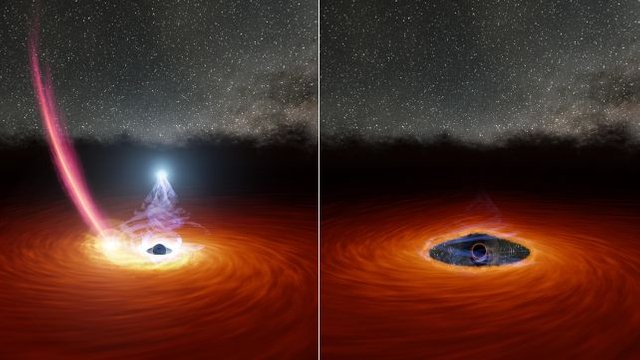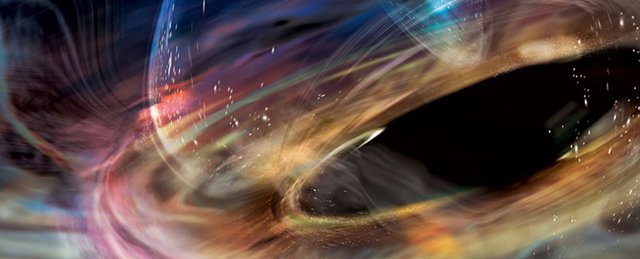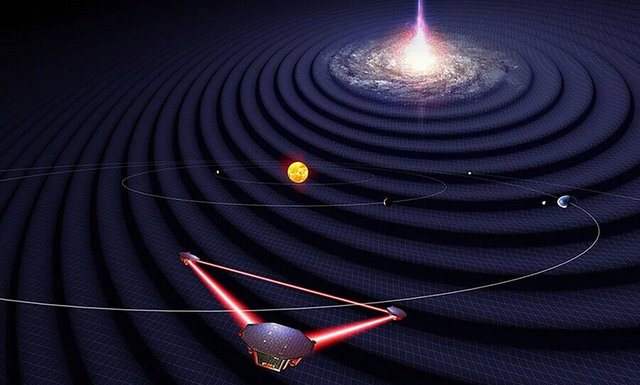The closest astronomical object to a black hole.
The closest astronomical object to a black hole.

Souce
According to this research, the closest to a black hole would be a star in Ana Blanca and this is very interesting because it will help us explain a question that intrigues astronomers and that is what happens in the event horizon of a black hole, event horizon or event horizon, one of the great mysteries of the universe.

Souce
This discovery was made thanks to the XMM Newton telescope of the European space agency, which has published the image shown, it is an illustration, the white dot there that is losing mass would be that White Dwarf star, the results show it is a white dwarf star that is similar to the sun, when it dies it ends up concentrating the core of its mass in a White dwarf, the sun for example, when it dies it will end up expelling its outer layers, it is not massive enough to explode, but it will end up transforming into a Red giant and expel its outer layers and its core will transform into a White dwarf.

Souce
These variations could indicate that there was a massive star-like object that was embedded in the accretion disk and was rapidly orbiting the black hole on its way to eventually being swallowed up as the object approached the black hole. It is picking up more and more speed and the time it takes to orbit the supermassive black hole is decreasing and the frequency of the variations is also increasing.

Souce
If we had a ship that traveled at the same speed we could reach the nearest star in about 13 and a half years, researchers say that in the 2030s when the LISA observatory is put into orbit around the sun at a Lagrange point, it will Being the largest observatory that humanity has ever created, it will be ready in the mid-1930s and will be composed of three spacecraft or three probes, each one two and a half million kilometers apart and connected by means of a laser, in this way they will form a triangle capable of detecting minute variations in gravitational waves and with this it will be able to detect what is happening, for example, in this black hole and in other objects in the Cosmos that produce gravitational waves, produce palpitations and vibrations of the fabric of space time.
The images without reference were created with AI
Thank you for visiting my blog. If you like posts about #science, #planet, #politics, #rights #crypto, #traveling and discovering secrets and beauties of the #universe, feel free to Follow me as these are the topics I write about the most. Have a wonderful day and stay on this great platform :) :)